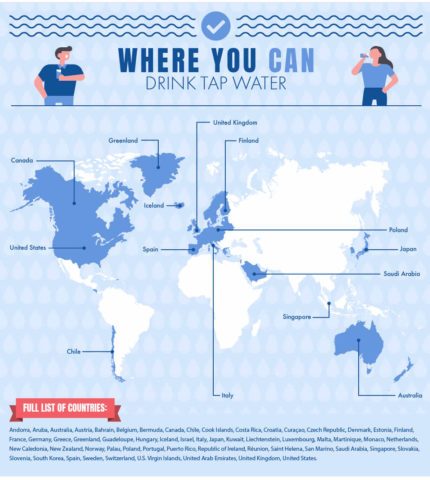Drinking tap water is not something that all people are used to, much less if you are visiting another country.
That is why the Canadian site Globehunters developed a map of nations where health standards are correct, and you can rest easy if you are thirsty and do not have a bottle of water on hand.
Oddly enough, in the Latin American region, only 2 countries meet these standards: Chile and Costa Rica. The rest of the Latin American countries have been marked within the places “where you cannot drink tap water”.

The images are intended to help tourists who are in countries other than their own, indicating where it is safe to drink tap water. For the preparation of this map, Globehunters compiled information from the United States Agency for Disaster Prevention and the Center for Disease Control (CDC).
Interestingly, 187 countries are shown that would not be safe for water consumption. This does not mean that it is not potable or that it does badly for health, but eventually it is recommended not to do so because of possible contamination of some components.
In fact, the World Health Organization (WHO) states that some factors that should be considered to say that liquid sources may be bad are: infectious agents, toxic chemicals, and radiological contamination as risk factors.
In the case of Puerto Rico, it must be remembered that, in December 2018, several citizens of the metropolitan area claimed that the liquid came out with a yellowish or brownish color.
In this regard, the director of the metropolitan region of the Aqueduct and Sewer Authority (AAA), Roberto W. Martínez, said that the drinking water supplied by the Sergio Cuevas filter plant to said area is of high quality.
In addition, he explained that the change in color was due to the dry weather recorded weeks earlier on the island, which caused a high concentration of manganese in the intake of raw water from the filter plant located in Trujillo Alto.
The official explained that manganese is a mineral that is always present in bodies of water, but when there are periods of little precipitation, the mineral increases its concentration in the dam.
“This reaction is what causes the water to turn yellowish, however, contrary to situations of high turbidity where particles are registered in the water, the presence of manganese does not represent a risk to health and maintains the quality parameters of the water we serve”, he concluded.

